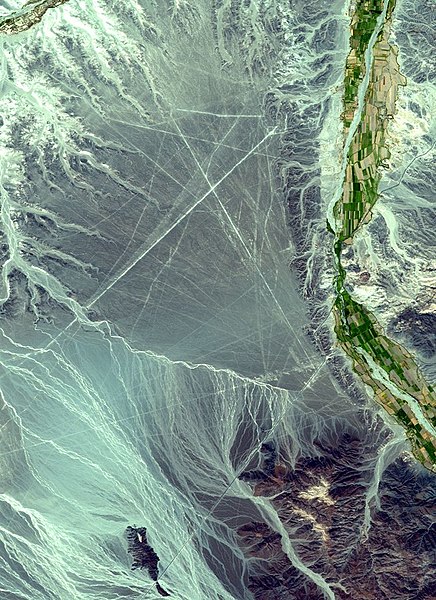Not all lines are straight. A geodesic, the shortest distance between two points on the surface of the Earth, is a curve. Add random noise to a line and it can take on an aspect of a lightning strike, flickering flames, a rough sea, rain falling on a lake and other representations of chaotic behaviour or liquid flow according to the frequencies present in the noise. Any kind of line, straight, curved or distorted, can suggest an edge, a boundary or a link between two locations.
Alternatively we may want a simplified view where the purity of straight lines or the intersections of many lines are used to represent underlying curvature or some more complex shape. A grid of lines can define a two or three dimensional space where equal spacing represents the world as we see it but other spacings can give the effect of non-linearity. We can show distances and dimensions that would otherwise be too small or too large to see. We can also employ the additional dimensions of light, colour, hardness, discontinuity (dots and dashes) and blur to achieve the effect we want.
There are few straight lines in nature and even fewer orthogonal straight lines. A straight line has its own special significance when used representationally. An icon of human-kind one might say.

Satelight image of the nazca lines
from Wikimedia Commons NASA/GSFC/MITI/ERSDAC/JAROS, and U.S./Japan ASTER Science Team


No comments:
Post a Comment